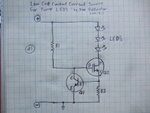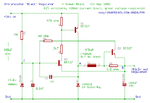yoosefheidari
Member level 5

- Joined
- Aug 31, 2013
- Messages
- 91
- Helped
- 0
- Reputation
- 0
- Reaction score
- 1
- Trophy points
- 1,288
- Activity points
- 2,051
HIi want to turn on 7-8 power led(1 watt) and i need a simple current limiter.
i have a 25.9v li-ion battery and need 350 ma for each led.
each led need 3.12v and led's are series.
i need a simple circuit with high efficiency.
please help me.
i have a 25.9v li-ion battery and need 350 ma for each led.
each led need 3.12v and led's are series.
i need a simple circuit with high efficiency.
please help me.




